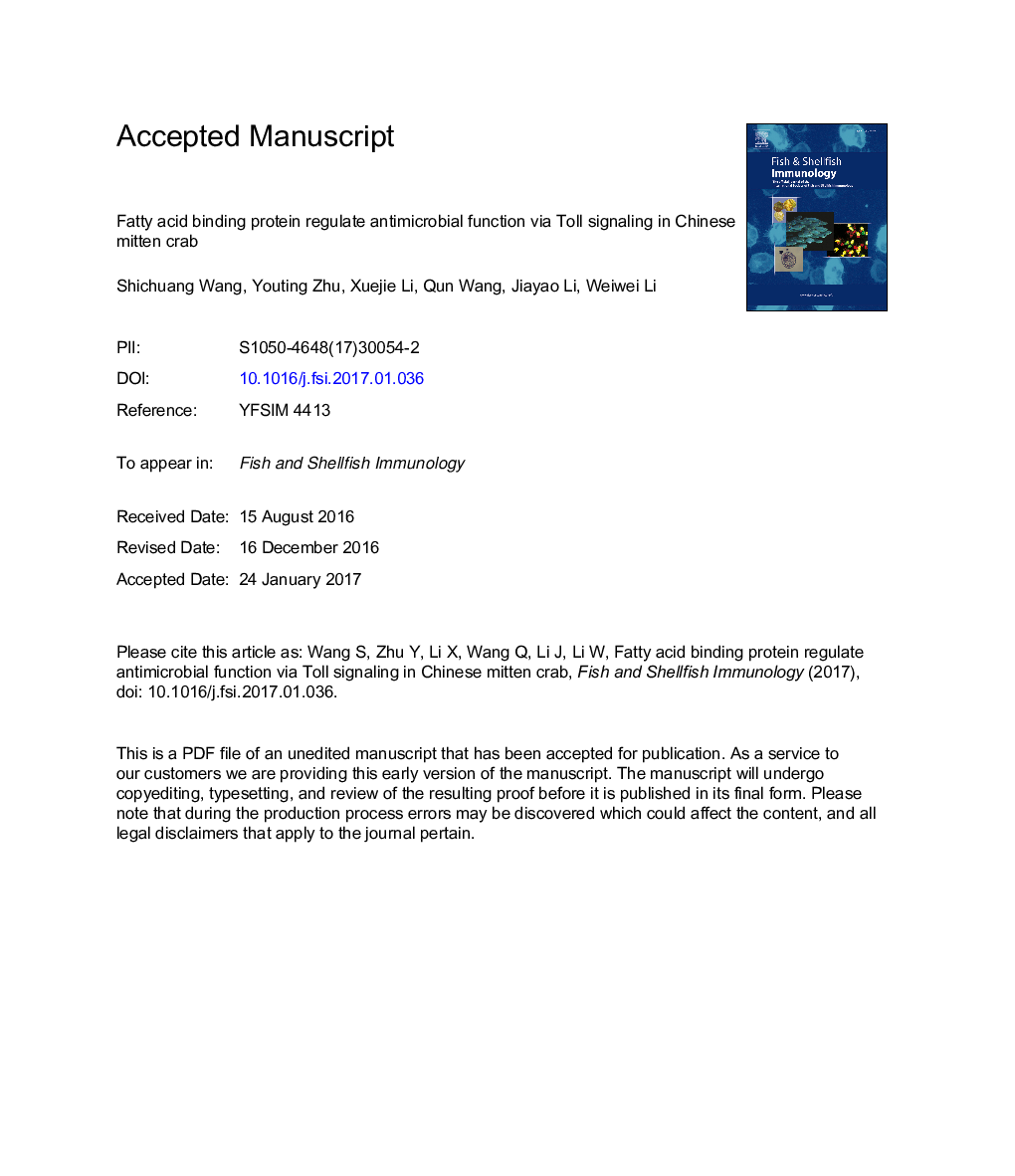| Article ID | Journal | Published Year | Pages | File Type |
|---|---|---|---|---|
| 5540904 | Fish & Shellfish Immunology | 2017 | 36 Pages |
Abstract
Fatty acid binding proteins (FABPs) are members of the lipid binding protein superfamily and play crucial role in fatty acid transport and lipid metabolism. In macrophages, Adipocyte-type FABP is an important mediator of inflammation. However, the immune functions of FABPs in invertebrates are not well understood; here, we obtained the gene structure of Eriocheir sinensis FABP 3 and FABP 9 (EsFABP 3 and EsFABP 9), and compared with EsFABP 10. The mRNA expression profiles show that all three FABPs were significantly up-regulated in hemocytes after being challenged with bacteria. Of the three, EsFABP 3 was the most stable and also the most highly up-regulated. Further studies showed that knockdown of EsFABP 3 led to higher bacterial counts in the hemocyte culture medium and a significant decrease in the mRNA expression of some antimicrobial peptides following bacterial stimulation. Moreover, a subcellular study demonstrated that EsFABP 3 can affect nuclear translocation of the dorsal after Gram-positive bacterial stimulation in hemocytes. These findings support the notion that EsFABP 3 could inhibit bacterial proliferation by regulating antimicrobial peptides expression via the Toll signaling pathway.
Related Topics
Life Sciences
Agricultural and Biological Sciences
Aquatic Science
Authors
Shichuang Wang, Youting Zhu, Xuejie Li, Qun Wang, Jiayao Li, Weiwei Li,
